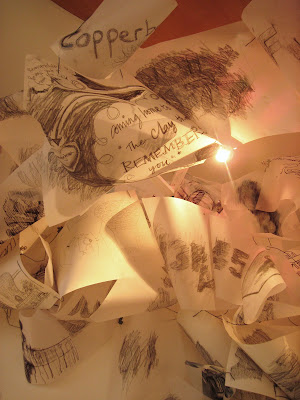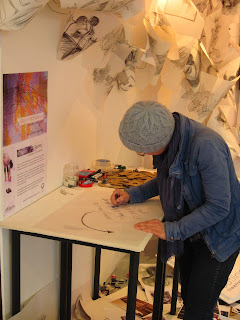The
Outline drawing team working with the friends of
BMAG delivered the first practical drawing workshop in the museum.
Participants analysed paintings and famous art works from an artist’s perspective, making drawings in pen and pencil. The art historian has great insights to impart about the artwork in museum collections, but often for artists they are more immediate and relevant than historical. They respond to the visual and need to capture the excitement of looking at the art of the past.
The participants worked with practising artists, Ian Andrews, Sally Butcher and Tjark Schoenfeld in making compositional analyses of paintings in the collection, looking at the main directional impulses, the distribution of lights and darks and the use of positive and negative spaces. The practical drawing was followed by a group critique and concluded with a presentation by Graham Lawlor who contextualised the practical session into an art historical framework.
Ian Andrews demonstrating and discussing the main directional lines and tonal values in an artwork with a participant of the workshop.
One of many studies produced during the workshop.
Ian Andrews and the group of participants during the group critique, which followed the workshop.
Graham Lawler gave the group an insight into how artists construct and develop artworks from an art historical point of view.


+of+DSC_0002.JPG)





















































